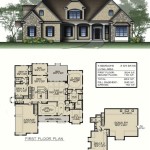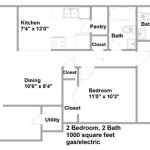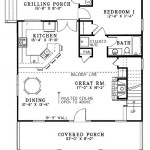Two-Story Colonial Home Plans: A Comprehensive Guide
The two-story Colonial home remains a cornerstone of American residential architecture, prized for its symmetry, classic details, and efficient use of space. This architectural style, evolved from early European settlements, has adapted over centuries while retaining its fundamental design principles. Understanding the key features and variations within Colonial architecture is crucial for anyone considering building or renovating a two-story Colonial home.
Colonial architecture encompasses a diverse range of subtypes, each reflecting regional influences and historical periods. The most prevalent types include the New England Colonial, the Georgian Colonial, and the Dutch Colonial. Each subtype exhibits distinct characteristics in terms of rooflines, ornamentation, and overall massing.
Choosing the right Colonial home plan involves careful consideration of several factors, including lot size, budget, preferred interior layout, and desired level of historical accuracy. This article will explore the defining characteristics of two-story Colonial homes, examine various plan options, and provide insights into the key considerations for successful implementation.
Defining Characteristics of Two-Story Colonial Homes
Several architectural elements consistently define the two-story Colonial style. Symmetry is paramount, with a balanced façade featuring a central front door flanked by matching windows. The roof is typically a gabled roof with a moderate pitch, although variations such as gambrel roofs (characteristic of Dutch Colonials) exist. Window placement is symmetrical, often featuring double-hung windows with shutters.
Material choices often reflect the region where the home is located. In New England, wood clapboard siding is common, while brick is frequently used in Georgian and Dutch Colonial examples. Decorative elements are generally restrained, focusing on details such as door surrounds, cornices, and window pediments. The overall aesthetic emphasizes order, proportion, and a sense of enduring stability.
The interior layout of a traditional two-story Colonial typically features a central hallway leading to formal living spaces on either side. The kitchen is often located at the rear of the house, with bedrooms situated on the second floor. Fireplaces are a common feature, adding both warmth and visual interest.
Modern interpretations of Colonial architecture often incorporate contemporary amenities while maintaining the style’s fundamental characteristics. Open floor plans, larger windows, and updated materials are frequently integrated into new Colonial homes. The key is to strike a balance between historical accuracy and modern living requirements.
Specifically, two story colonial floor plans usually have a similar structure. The ground floor typically accommodates the living room, dining room, kitchen, and potentially a study or home office. These spaces are meticulously designed to facilitate both formal entertaining and casual daily living. The upstairs, accessible by a prominent staircase, usually has all the bedrooms, including a master suite and additional bathrooms.
Exploring Various Two-Story Colonial Home Plan Options
The market offers a wide variety of two-story Colonial home plans, ranging from historically accurate reproductions to modern interpretations. Pre-designed plans provide a cost-effective and convenient option for those seeking a specific layout and style. Custom-designed plans allow for greater flexibility and personalization, enabling homeowners to tailor the design to their specific needs and preferences.
Stock plans are readily available from numerous online sources and architectural firms. These plans typically include detailed drawings, material lists, and construction specifications. Before purchasing a stock plan, it is essential to carefully review the dimensions, layout, and material choices to ensure that it aligns with the homeowner's requirements and budget.
Custom-designed plans, while more expensive and time-consuming, offer the opportunity to create a truly unique and personalized home. Working with an architect allows homeowners to incorporate specific design features, address site-specific challenges, and optimize the layout for their individual lifestyle. The architect will consider factors such as solar orientation, prevailing winds, and landscaping to create a home that is both aesthetically pleasing and energy-efficient.
When selecting a plan, consider the size and configuration of the lot. A narrow lot may require a plan with a more vertical orientation, while a larger lot can accommodate a more expansive design. The orientation of the home on the lot is also crucial, as it affects the amount of natural light and solar gain the home receives.
Budgetary constraints are a significant factor in the planning process. Stock plans are generally more affordable than custom plans, but they may require modifications to meet specific needs. It is prudent to obtain multiple bids from contractors to ensure that the construction costs align with the available budget. Furthermore, factor in costs associated with permits, landscaping, and interior finishes.
Modern adaptations often include features such as larger kitchens with islands, open-concept living areas, and luxurious master suites. These updates enhance the functionality and comfort of the home while retaining the classic Colonial aesthetic. However, it is essential to ensure that these modern features are seamlessly integrated into the overall design to maintain the style's architectural integrity.
Interior design considerations are also important. Colonial interiors typically feature hardwood floors, painted trim, and traditional furnishings. Wainscoting, crown molding, and other decorative elements can add visual interest and enhance the historical character of the home. Color palettes generally consist of muted tones and classic patterns.
Key Considerations for Successful Implementation
Successfully implementing a two-story Colonial home plan requires careful planning, attention to detail, and collaboration between the homeowner, architect, and contractor. Thorough preparation and realistic expectations are essential to ensure a smooth and successful construction process.
One of the first steps is to thoroughly research local building codes and regulations. Zoning ordinances may restrict the size, height, and setback of the home. Homeowners’ associations may also have specific architectural guidelines that must be followed. Failure to comply with these regulations can result in costly delays and modifications.
Selecting a qualified and experienced contractor is paramount. The contractor should have a proven track record of successfully completing similar projects and possess a thorough understanding of Colonial architecture. Request references from previous clients and carefully review their portfolio of work. A detailed contract outlining the scope of work, payment schedule, and dispute resolution process is essential.
Maintaining clear and consistent communication between the homeowner, architect, and contractor is crucial throughout the construction process. Regular meetings should be held to discuss progress, address any concerns, and make necessary adjustments to the plan. Promptly respond to questions and requests from the contractor and architect to avoid delays.
During construction, it is important to conduct regular site visits to monitor progress and ensure that the work is being performed according to the plans and specifications. Address any discrepancies or concerns promptly with the contractor. Keep detailed records of all communications, changes, and payments.
Pay close attention to the details of the finishes and fixtures. Choose high-quality materials and finishes that are appropriate for the Colonial style. Consider using energy-efficient windows, insulation, and appliances to reduce energy consumption and lower utility bills. Landscaping can also play a significant role in enhancing the curb appeal of a Colonial home. Plantings should be carefully selected to complement the architectural style and create a welcoming environment.
Finally, it is important to be patient and flexible. Construction projects often experience unexpected delays and challenges. Be prepared to make adjustments to the plan and timeline as needed. Maintain a positive attitude and work collaboratively with the architect and contractor to overcome any obstacles.
Before starting any construction, ensure all necessary permits are acquired. This includes building permits, electrical permits, plumbing permits, and any other permits required by the local jurisdiction. Failing to obtain the appropriate permits can lead to fines, delays, and even legal action.
Consider the long-term maintenance requirements of a Colonial home. Wood siding requires regular painting or staining to prevent rot and decay. Chimneys should be inspected and cleaned annually to prevent chimney fires. Roofs should be inspected periodically for leaks and damage. Regular maintenance will help to preserve the beauty and value of the home for years to come.
In conclusion, choosing and implementing a two-story Colonial home plan is a significant undertaking that requires careful planning, attention to detail, and collaboration between various professionals. By understanding the defining characteristics of the Colonial style, exploring various plan options, and carefully considering the key implementation factors, homeowners can create a beautiful and functional home that embodies the enduring appeal of this classic architectural style.

Colonial Style House Plans For A 2 Story 4 Bedroom Home

1925 Colonial Revival Classic Home Two Story Bowes Co Hinsdale Il House Plans Beach Craftsman

1929 Two Story Brick House From Sears With Floor Plans Sims Blueprints Vintage

Plan 027h 0340 The House

1924 Southern Pine Assn Plan 3029 Colonial House Plans Model Vintage

Colonial Home Plans House

Brick Home Plan With Seven Bedrooms 4711 Grand Colonial 2902

2 Story Colonial Duncan House Plans Craftsman Traditional

Colonial House Plans Dutch Modern More Monster

Plan 027h 0340 The House








